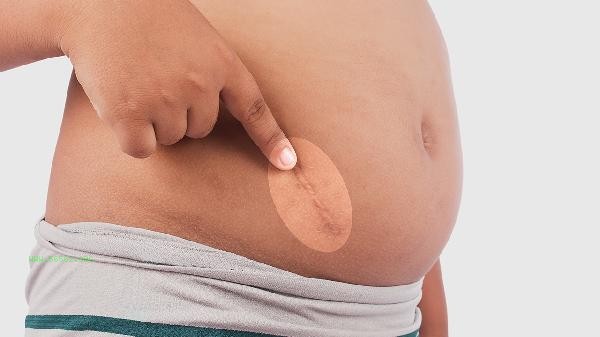The appearance of excess fat on both sides of the waist in ten year old children may be a normal physiological phenomenon, or it may be related to factors such as imbalanced diet, insufficient exercise, and changes in hormone levels. Common causes of childhood obesity include long-term high calorie diets, sedentary behavior, genetic factors, endocrine and metabolic abnormalities, and psychological stress. If accompanied by growth retardation or skin abnormalities, seek medical attention promptly to investigate pathological factors.

1. Physiological fat accumulation
The distribution of fat in children before puberty will naturally adjust, and temporary excess fat may appear on both sides of the waist as areas prone to fat accumulation. At this stage, changes in growth hormone secretion may cause fat redistribution, which usually improves gradually with height. It is recommended to regularly monitor the height to weight ratio and maintain a BMI within the normal range.
2. Dietary structure problems
Excessive intake of refined carbohydrates and trans fatty acids is the main cause, such as frequent consumption of fried foods, sugary drinks, etc. These high-energy density foods can promote visceral fat deposition, and thickening of fat on both sides of the waist is often an early manifestation. We need to adjust our dietary structure and increase the proportion of vegetables, fruits, and high-quality protein intake.
3. Insufficient physical activity
Daily exercise time of less than 60 minutes can lead to a decrease in basal metabolic rate, and local fat accumulation is more likely to occur when the waist and abdominal muscle groups lack exercise. It is recommended to enhance lumbar muscle tension and promote fat metabolism through whole-body exercises such as swimming and basketball combined with core training such as plank support.

4. Genetic metabolic factors
When both or one parent has a history of obesity, the probability of adipocyte proliferation in children is significantly increased. This type of situation requires stricter monitoring of body fat percentage, and if necessary, indicators such as leptin receptor genes and thyroid function can be tested. Early intervention can effectively prevent the occurrence of metabolic syndrome.
5. Pathological obesity
Cushing's syndrome, pituitary dysfunction, and other diseases may lead to centripetal obesity, usually accompanied by features such as skin purple lines and a full moon face. Insulin resistance induced echinococcosis can also result in abnormal waist circumference, which requires glucose tolerance testing and cortisol testing for diagnosis.

It is recommended to establish regular diet and exercise records, ensuring at least 60 minutes of moderate to high-intensity exercise per day, and reducing screen time. The main cooking method is steaming, and the intake of high calorie healthy snacks such as nuts should be controlled. Regularly measure the waist to hip ratio. If it continues to exceed 0.9 or is accompanied by symptoms such as breathing difficulties and joint pain, it is necessary to seek professional evaluation from the pediatric endocrinology department. Parents should pay attention to avoiding excessive emphasis on weight numbers and help their children establish healthy lifestyle habits through positive methods such as home exercise.








Comments (0)
Leave a Comment
No comments yet
Be the first to share your thoughts!